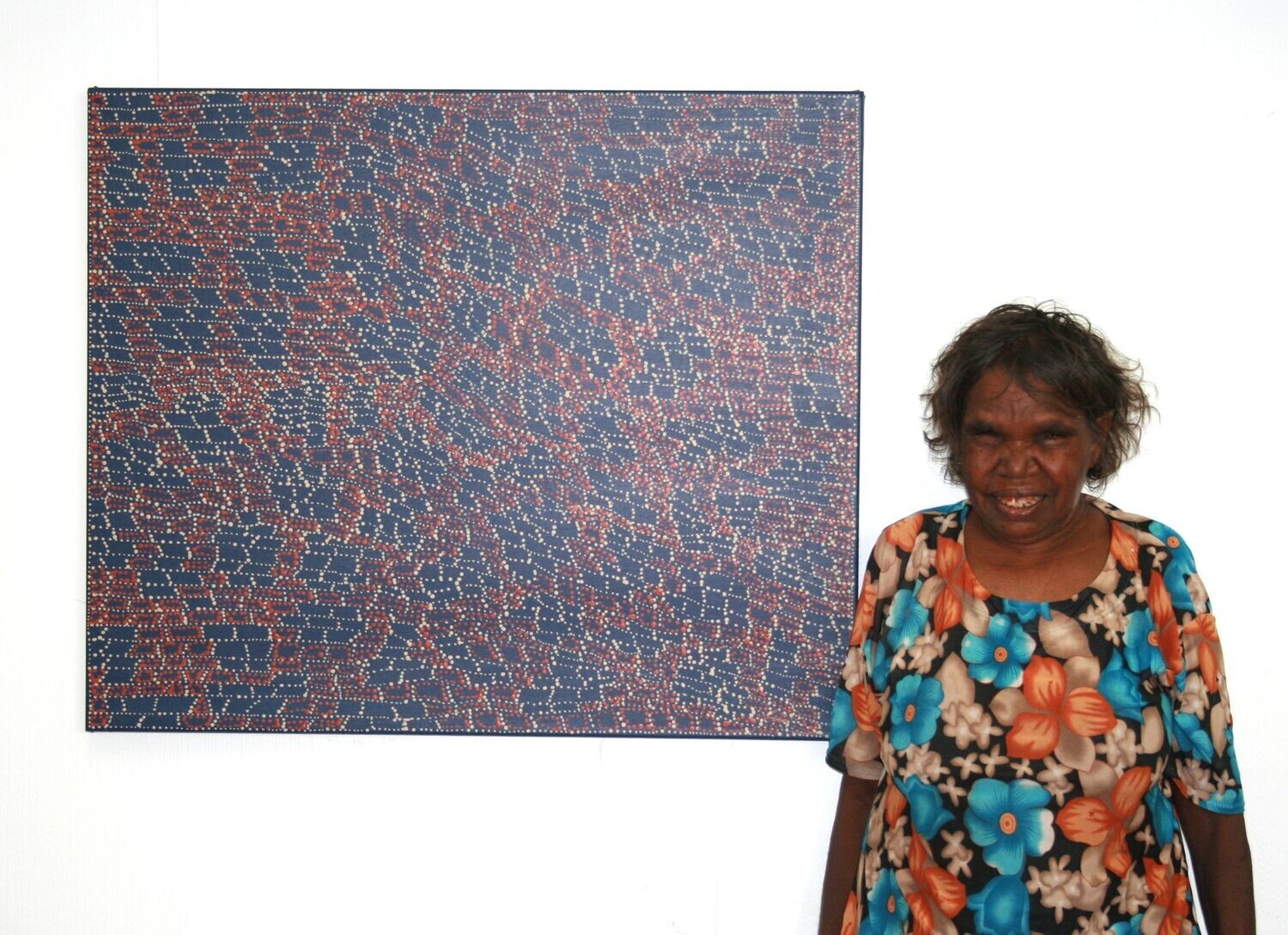Karntakurlangu, 2008 by Dorothy Napangardi 76x91cm
Dorothy Napangardi's 2008 stunning painting "Karntakurlangu", exemplifies her profound connection to her ancestral lands near Lake Mackay in the Tanami Desert, Northern Territory. The painting's intricate matrix design, featuring red ochre and buttery yellow hues against a midnight blue backdrop, narrates the journey of ancestral women traversing the sacred terrain of Mina Mina. This depiction includes the soakages and salt crustations formed as rainwater recedes, as well as the spinifex clumps and sandhills characteristic of the area.
The term "Karntakurlangu" translates from the Warlpiri language to "Belonging to Women," underscoring the site's significance as a sacred women's place. According to the Jukurrpa (Dreaming), Napangardi and Napanangka women gathered at Mina Mina to collect ceremonial digging sticks, known as "Karlangu," which had emerged from the ground. They then journeyed eastward, performing rituals of song and dance, eventually reaching a location called Jankinyi. Today, a vast belt of Desert Oak trees (Allocasuarina decaisneana) stands where these digging sticks once emerged.
In Warlpiri culture, the aunt-niece relationship is pivotal for the transmission of traditional knowledge. This bond is evident in the way Dreaming stories and cultural practices are passed down from one generation to the next. Napangardi's artwork not only captures the physical landscape but also embodies the rich cultural narratives and ancestral heritage of her people.
"Karntakurlangu, 2008" is featured on page 38 of the monograph Honouring and Remembering the Art and Life of Dorothy Napangardi, 1987-2013 , highlighting its importance in her artistic legacy
GALLERY GONDWANA
ABN: 75 009 652 046
All prices displayed in AUD, GST included.
Gallery Gondwana acknowledges the First Peoples of this land and recognises their continuous connection to culture, community and Country.
CONTACT US
+61 417 75 74 75
+61 417 27 44 31
roslyn@gallerygondwana.com.au
PO Box 3770, Alice Springs NT 0871 Australia
Vatu Sanctuary
Saturate yourself and be inspired by the power of Aboriginal art in a living gallery environment.

All Rights Reserved | Gallery Gondwana
